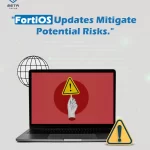The recent cyberattack on Leidos, a major Hackers leak documents from Pentagon IT services provider Leidos, has sent shivers down the spines of many., has sent shivers down the spines of many. While the full impact of the leaked data remains unclear, it serves as a stark reminder of the ever-present threat posed by hackers. In today’s digital age, where we entrust a vast amount of personal and professional information online, the question lingers: what happens when this data falls into the wrong hands?

What happened to Leidos Holdings?
Leidos Holdings, a major IT services provider for the Pentagon, recently experienced a data breach where hackers gained access to internal documents. However, the full extent of the situation is still under investigation. Here’s a breakdown of what we know so far:
- The Hack: Hackers infiltrated Leidos’ systems and accessed internal documents.
- Data Leaked: Some of these documents were subsequently leaked online, though the exact nature of the leaked information remains unclear.
- Leidos’ Response: Leidos claims that the leak did not affect their network or any “sensitive customer data.” However, the potential exposure of any Pentagon-related information raises security concerns.

What is the Impact of leaked internal documents stolen from Leidos Holdings?
However, The full impact of the Leidos data leak is still under investigation, there are some potential consequences we can consider:
1- National Security Risks:
- Exposed Operations: Leaked documents could contain details about ongoing military operations, training exercises, or deployment plans. This information, if exploited by foreign adversaries, could compromise national security efforts and put lives at risk.
- Project Vulnerability: Technical specifications, blueprints, or development timelines for classified projects could be exposed. This could give foreign powers a significant advantage in understanding and potentially countering these projects.
- Technology Advantage Lost: Sensitive information about cutting-edge military technologies could be leaked, accelerating foreign development of countermeasures and potentially diminishing the U.S. technological edge.
2- Loss of Public Trust:
- Eroded Confidence: The incident could erode public confidence in the Pentagon’s ability to safeguard classified information. This can lead to distrust about the government’s ability to protect national security interests in this digital age.
- Clarity Concerns: The lack of clarity surrounding the leaked data might raise questions about clarity within the Pentagon and Leidos. This can further damage public trust in how sensitive information is handled.
3- Reputational Damage:
- Leidos’ Image Damaged: The breach can damage Leidos’ reputation as a trusted IT service provider for the government. Their ability to secure sensitive data might be called into question, potentially impacting future contracts.
4- Supply Chain Risks:
- Vendor Review: The reliance on third-party vendors like Leidos for critical IT services highlights the importance of robust cybersecurity measures throughout the entire supply chain. This breach exposes potential vulnerabilities in how sensitive data is handled by contractors, leading to increased scrutiny of future partnerships.
5- Financial Impact:
- Investigation Costs: Investigating the breach, potentially recovering stolen data, and implementing stricter security measures will likely incur significant costs for Leidos and the Pentagon.
6- Potential Legal Effect:
- Leidos’ Liability: Depending on the nature of the data leak and the security measures in place, Leidos could face legal consequences for failing to protect sensitive information.
It’s important to note that these are potential consequences, and the actual impact may be less severe. However, the Leidos data breach serves as an awarning tale, highlighting the importance of robust cybersecurity measures and the far-reaching consequences of cyberattacks.
Who is responsible for the Leidos Holdings data breach?
Because of the ongoing investigation, we can not determine who is responsible for the Leidos Holdings data breach. But we can assign it to some of the potential participants who are involved:
1- the leak hacker:
The individuals or groups who infiltrated Leidos’ systems are directly responsible for the cyberattack itself. Identifying and apprehending them can be challenging, but law enforcement agencies are likely involved in the investigation.
2- Leidos Holdings:
Leidos Holdings itself is ultimately responsible for securing its systems and the sensitive data entrusted to it. If the breach resulted from lacking security measures on their part ( outdated software, weak access controls, lack of employee training), they might carry some responsibility.
3- Potential Third-Party Involvement:
Depending on the details of the attack, a third-party vendor or software used by Leidos could have played a role. If a vulnerability in such a third-party system was exploited, they might hold some level of responsibility.
The Leidos data breach underscores the importance of robust cybersecurity measures across all levels. Businesses, government agencies, and their vendors must prioritize data security and continuously assess potential vulnerabilities. By establishing strong defenses and staying vigilant, you can work towards minimizing the risk of such attacks and their associated consequences.
FAQs and How to Protect Your Data
The recent data breach at Leidos Holdings, a Pentagon IT services provider, raises concerns about the security of our information in the digital age. Let’s delve into some frequently asked questions related to data breaches and how they connect to the Leidos situation:
What Happens When Hackers Steal Your Data?
The consequences of a data breach vary depending on the stolen information. Here’s a look into some potential scenarios:
- Identity Theft: Hackers can use your details (name, address, Social Security number) to commit identity theft. This could involve opening fake accounts, racking up debt, or even impersonating you.
- Financial Loss: Stolen financial information (credit card numbers, bank account details) can be used for unauthorized purchases or even drain your accounts entirely.
- Reputation Damage: Leaked emails, photos, or sensitive documents can cause significant damage to your personal or professional reputation. Depending on the nature of the leaked information, the consequences can be long-lasting and emotionally draining.
- Data Exploitation: Stolen data is often sold on the dark web, making you susceptible to further targeted attacks.
What Information Do Hackers Look For?
Hackers target a variety of information, depending on their goals:
- Personally Identifiable Information (PII): Names, addresses, Social Security numbers – the foundation for identity theft schemes.
- Financial Data: Credit card numbers, and bank account details – used for direct financial gain.
- Login Credentials: Usernames, passwords – the keys to your online accounts, allowing access to even more sensitive information.
- Sensitive Documents: Business documents, personal files – exploited for blackmail or sold on the dark web for various malicious purposes.
Can a Hacker Steal My Files?
Hackers can infiltrate your computer or cloud storage systems and steal your files. This includes personal documents, photos, videos, and even financial records. The Leidos breach, while the full extent is unknown, highlights the potential for sensitive government documents to be stolen.
Does a VPN Stop Hackers? Not Entirely.
VPNs (Virtual Private Networks) encrypt your internet traffic, making it more difficult for hackers to intercept your data in transit. However, they are not a foolproof solution. Hackers can still target your device directly or exploit vulnerabilities in outdated software. Similarly, the Pentagon and Leidos likely had security measures in place, but they were still breached.
Can Hackers Access Your Documents?
Hackers can gain access to your documents through various methods, including malware that steals data, phishing attacks that trick you into giving away passwords or exploiting vulnerabilities in outdated software. While the specifics of the Leidos attack are unclear, these are all common methods used by hackers.
How Do You Know If a Hacker Is Watching You?
There’s no guaranteed way to tell if a hacker is actively monitoring your device. However, some red flags might indicate a potential compromise:
- Unusual Activity: Unexplained changes in passwords, unrecognized financial transactions, or software installations you didn’t authorize could indicate a compromised system.
- Slow Performance: Hackers may use your device’s resources for malicious activities, leading to sluggish performance.
- Suspicious Pop-Ups or Emails: Phishing attempts are a common tactic. Be wary of unsolicited emails or pop-ups urging you to click on links or download attachments.
By understanding these data security basics and taking preventive measures, you can significantly reduce your chances of becoming a victim of a cyberattack. While the Leidos breach involved a major government contractor, these same principles apply to protecting your own personal information.
Related posts:
 Fawry comments on cyber attacks and data leaking
Fawry comments on cyber attacks and data leaking
 Effective Policy for data retention policy best practices
Effective Policy for data retention policy best practices
 the Latest fortinet vulnerability 2024
the Latest fortinet vulnerability 2024
 What Is ISO 27001?, Core Principles, Benefits, and Requirements
What Is ISO 27001?, Core Principles, Benefits, and Requirements
 How to save Configuration in Fortinet Firewall?
How to save Configuration in Fortinet Firewall?

